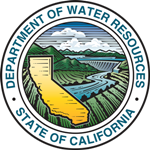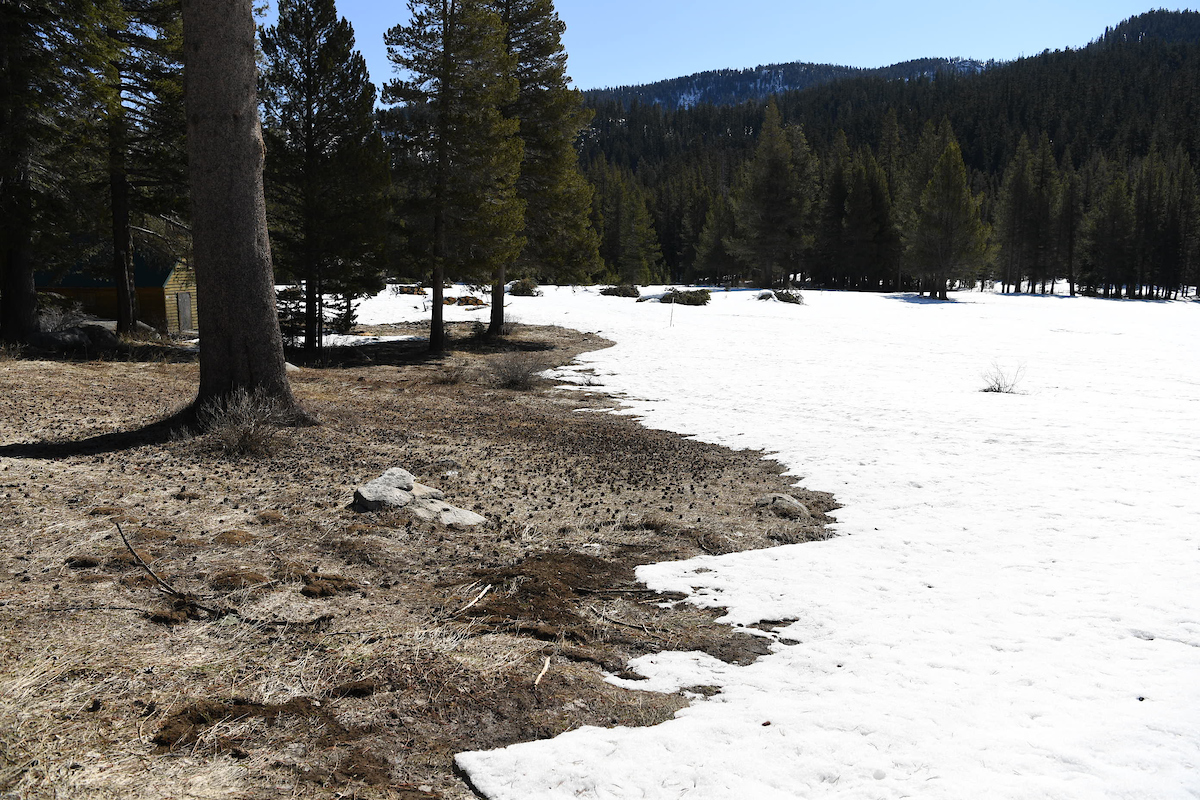Statewide, snowpack’s water equivalent is 11 inches, or 46 percent of the March average
From the Department of Water Resources:

The Department of Water Resources (DWR) today conducted the third manual snow survey of 2020 at Phillips Station. The manual survey recorded 29 inches of snow depth and a snow water equivalent (SWE) of 11.5 inches, which is 47 percent of the March average for this location. The SWE measures the amount of water contained in the snowpack, which provides a more accurate forecast of spring runoff.
“Right now, 2020 is on track to be a below-average year but we could still see large storms in March and April that will improve the current snowpack,” said Sean de Guzman, chief of DWR’s Snow Surveys and Water Supply Forecasting Section. “While periods of dry conditions are expected in California, climate change has made them more unpredictable and extreme which is why we must always use the water we have wisely.”
While February has been very dry, it’s not unprecedented for California to be in this position. In 2018, after a dry start, March storms made up much of the deficit and brought California closer to normal that year.
In addition to the manual surveys, DWR collects readings from 130 electronic snow sensors scattered throughout the state. Measurements indicate that statewide, the snowpack’s water equivalent is 11 inches, or 46 percent of the March average.
“The snowpack that we are measuring today is a critical element to all water resources managers in California, especially the State Water Project, which provides water to more than 27 million Californians and 750,000 acres of farmland,” said Molly White, chief of DWR’S State Water Project, Water Operations Office. “The data generated from snow surveys is one factor used to determine how much water will be allocated to the State Water Project Contractors.
The state’s largest six reservoirs currently hold between 92% (Oroville) and 132% (Melones) of their historical averages for this date. Lake Shasta, California’s largest surface reservoir, 107% of its historical average and sits at 78% of capacity.
DWR conducts five media-oriented snow surveys at Phillips Station each winter in January, February, March, April and, if necessary, May. On average, the snowpack supplies about 30 percent of California’s water needs as it melts in the spring and early summer.
Additional Resources
California Cooperative Snow Surveys Program Story Map https://arcg.is/1fiCbG
Snowpack readings (View readings for current regional snowpack and historical snowpack comparison)
CDEC precipitation data (View current charts for the Northern Sierra 8-station index for updated rainfall readings in the critical northern portion of the state, as well as the San Joaquin 5-station index and Tulare Basin 6-station index.)



